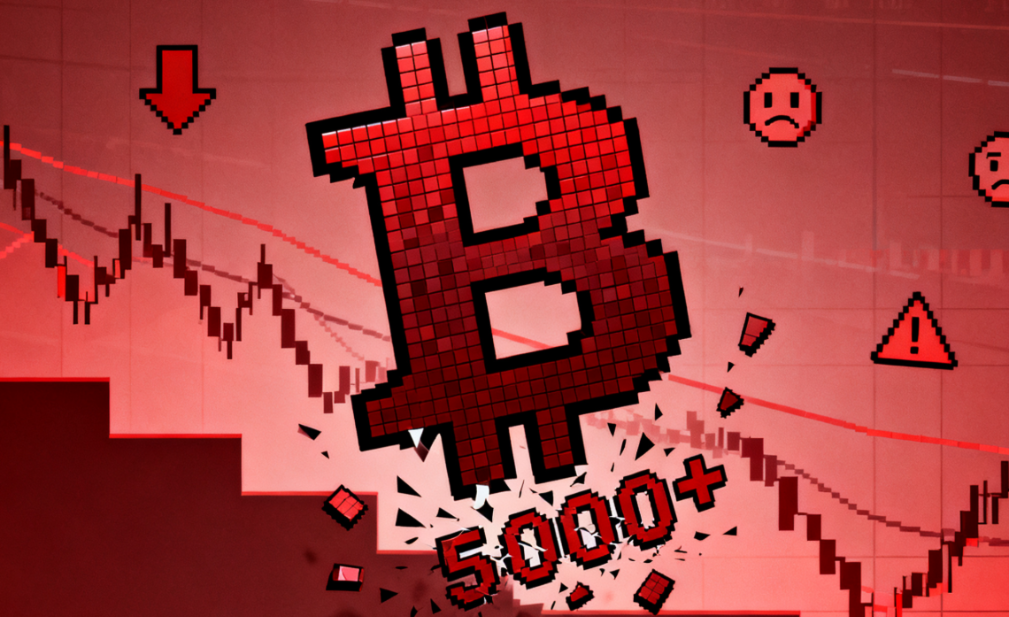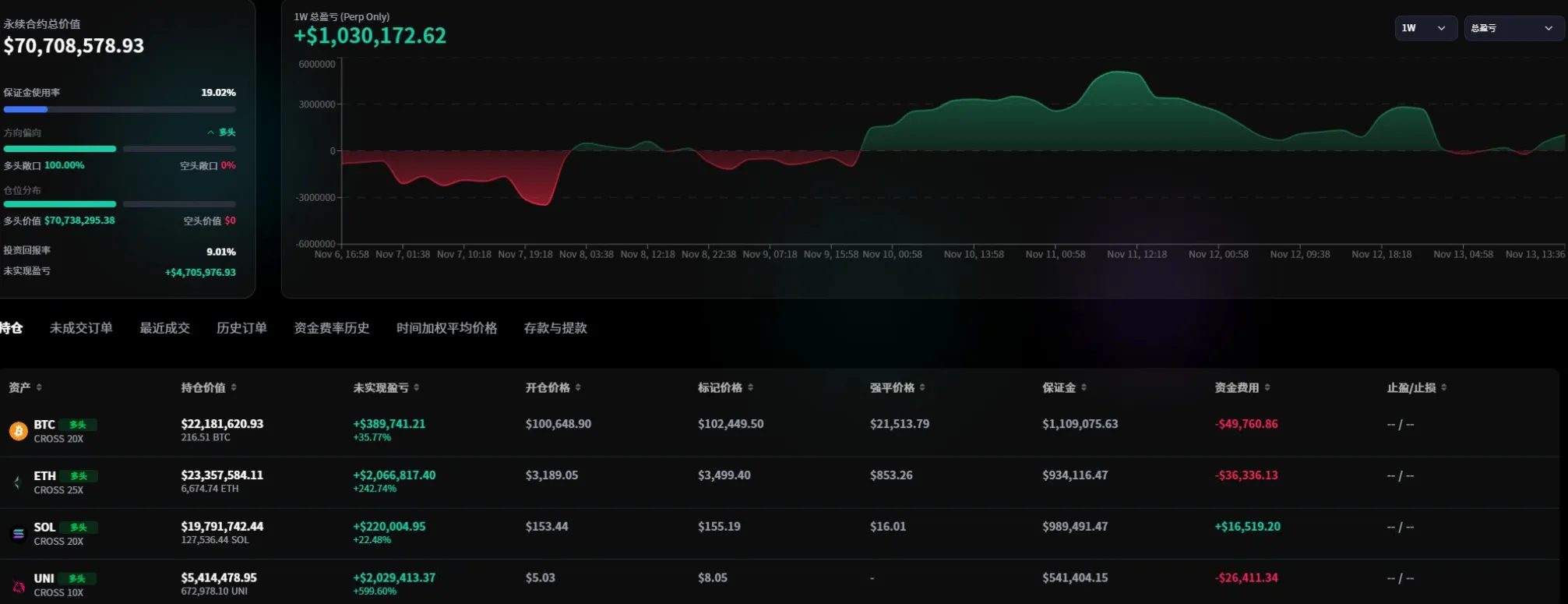Bitcoin has once again fallen below the psychological threshold of $100,000, with a market value evaporating by $450 billion in just over a month, creating a pervasive atmosphere of anxiety in the market. "It is no longer just a bear market smell in the air; we are already in a bear market," asserts the latest report from research institution 10x Research. On November 14, Bitcoin once again broke the $100,000 mark, dipping to a low of $98,000.
Since early October, the total market value of cryptocurrencies has evaporated by over $450 billion, as key buyers such as large funds, ETF allocation institutions, and corporate treasuries that have supported Bitcoin this year have all retreated.

1. Divergence in Institutional Views
As market volatility intensifies, major financial institutions have shown significant divergence in their outlook for Bitcoin.
● JPMorgan believes that the current downside potential for Bitcoin is "very limited." Analysts from the bank point out that Bitcoin's production cost has risen from about $92,000 to around $94,000, which has historically served as a bottom support for Bitcoin's price.
● In stark contrast, 10x Research directly states that the market has entered a "confirmed bear market phase." The institution captured trend reversal signals in mid-October and set the next key support level for Bitcoin around $93,000.
● Morgan Stanley strategists warn that Bitcoin is in the "autumn" phase of its four-year cycle. Historically, such cyclical adjustments often pose challenges for cryptocurrency investors.

2. Varied Opinions Among KOLs
On social media platforms like Twitter, opinion leaders in the cryptocurrency field have differing views on market trends.
● Analyst Bitcoin Teddy cited the "decreasing gold curve" model, indicating that Bitcoin's next target range is still between $160,000 and $170,000. This optimistic expectation suggests that Bitcoin could rise about 70% from its current level.
● Galaxy Digital appears more cautious, lowering its year-end target price for Bitcoin from $185,000 to $120,000. This adjustment reflects the conflicting psychology of market participants—optimistic about long-term potential but forced to confront short-term realities.
● Analyst borovik.eth interpreted the market trend from a political perspective: "The Democratic Party's victories in several state elections are the reason for the recent decline in cryptocurrencies. The Democratic Party is very unfriendly towards cryptocurrencies and capitalism."

3. Analysis of Decline Reasons
Increased Macro Pressure
The backdrop of this round of cryptocurrency decline is a significant deterioration in Wall Street's risk sentiment and a substantial sell-off of tech stocks.
● Recent cautious remarks from several Federal Reserve officials have been a direct catalyst for the shift in market sentiment. According to data from the Chicago Mercantile Exchange, the market's expectation of a rate cut in December has plummeted from over 70% a week ago to about 50%. This change has significantly affected investors' attitudes toward high-risk assets.
● Although the U.S. government shutdown lasting 43 days has ended, its subsequent effects are still ongoing. White House Press Secretary Levitt stated that important economic data, including inflation and employment reports, may never be released. This data absence puts the Federal Reserve in an information blind spot, increasing market uncertainty.
Internal Factors Troubles
From the perspective of the cryptocurrency market itself, several key support factors are fading.
● Wintermute OTC trading head Jake Ostrovskis pointed out: "Bitcoin has recently faced significant spot selling pressure and corporate hedging demand, and in the absence of positive narratives for cryptocurrencies, its correlation with traditional assets has rapidly increased."
● 10x Research further noted that weakened ETF inflows, continued selling by long-term holders, and low willingness for retail entry all indicate that market sentiment is deteriorating behind the scenes.
● The real emotional turning point occurred in early October, when nearly $19 billion in crypto leverage positions were liquidated in a single day, triggering a chain reaction of declines.
Changes in Political Environment
Changes in the U.S. political landscape have also added uncertainty to the cryptocurrency market.
● In the local elections on November 4, the Democratic Party achieved decisive victories in several states. Analyst borovik.eth believes this political change has a direct impact on the cryptocurrency market. The results of these local elections can be seen as a measure of public satisfaction with the Republican Party and a precursor to the midterm elections.
Changes in Market Structure
● From a market structure perspective, investors are rotating from high-growth, higher-valued stocks to those that may be seen as safer and cheaper. Siebert Financial Chief Investment Officer Mark Malek stated: "You see people still investing in stocks, but they are rotating from those high-growth, higher-valued stocks to those that may be seen as safer and cheaper."
● This "risk-off mode" was vividly reflected in Thursday's trading. The tech-heavy Nasdaq Composite Index closed down 2.29%, with tech giants generally declining; Tesla fell 6.64%, and Nvidia dropped 3.58%.
4. Market Outlook
● Based on historical experience, the current downtrend may not have reached its bottom. 10x Research pointed out that the two rounds of bear markets in the summer of 2024 and early 2025 brought declines of 30% to 40%. Currently, Bitcoin has only retraced over 20% from its 2025 peak, which is insufficient to form a true bottom signal.

● Demand for hedging in the derivatives market is rapidly increasing. Investors are showing a noticeable rise in demand for put options with strike prices below $100,000, with protective contracts around $90,000 and $95,000 being the most actively traded.
● Analysts at JPMorgan believe that the support price for Bitcoin is around $94,000. Historically, production costs have always served as the bottom support for Bitcoin's price.

As market expectations for a Federal Reserve rate cut in December have dropped sharply from 72% a week ago to about 50%, investors are reassessing the value of all high-risk assets. Bitcoin is still up about 5% from the beginning of the year and maintains over a 40% increase since the 2024 U.S. elections, but its upward momentum has significantly slowed.
The future market trend largely depends on how upcoming economic data will influence the Federal Reserve's decisions and whether Bitcoin can find strong support in the $93,000 to $94,000 range.
Join our community to discuss and grow stronger together!
Official Telegram community: https://t.me/aicoincn
AiCoin Chinese Twitter: https://x.com/AiCoinzh
OKX benefits group: https://aicoin.com/link/chat?cid=l61eM4owQ
Binance benefits group: https://aicoin.com/link/chat?cid=ynr7d1P6
免责声明:本文章仅代表作者个人观点,不代表本平台的立场和观点。本文章仅供信息分享,不构成对任何人的任何投资建议。用户与作者之间的任何争议,与本平台无关。如网页中刊载的文章或图片涉及侵权,请提供相关的权利证明和身份证明发送邮件到support@aicoin.com,本平台相关工作人员将会进行核查。




